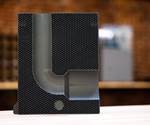Markforged launches first FR continuous fiber-reinforced plastic for 3D printing
V-0 rated Onyx FR to open new applications in aerospace, defense and automotive
Markforged (Cambridge, Mass., U.S.), manufacturer of metal and carbon fiber 3D printers, has announced the availability of Onyx FR, a V-0 rated flame-retardant material designed for industries such as aerospace, automotive and defense. Traditional 3D-printed plastics will burn if they catch fire, but this new material is self-extinguishing, so it will actually stop itself from burning. Onyx FR features unmatched strength, superior print quality, high-quality surface finish — all while resisting fire.
Onyx FR is available with Markforged’s Industrial Series printers. Learn more through the company’s datasheet.
Onyx FR joins Markforged’s portfolio of industrial metal and composite materials, including the cloud-based software platform Eiger, designed to enable users to design and print remotely. The company recently raised $82 million expand its product line, to include investments into composites fabrication.
“Onyx FR opens up more applications for 3D printing across automotive, aerospace, and defense industries because it meets higher fire safety standards,” says Jon Reilly, VP of product at Markforged. “When these parts are reinforced with strands of continuous carbon fiber, they are as strong as aircraft-grade aluminum at half the weight.”
Related Content
-
“Structured air” TPS safeguards composite structures
Powered by an 85% air/15% pure polyimide aerogel, Blueshift’s novel material system protects structures during transient thermal events from -200°C to beyond 2400°C for rockets, battery boxes and more.
-
MATECH C/ZrOC composite is deployed in hypersonic aeroshells
Ultra high-temperature insulating CMC targets hypersonics, space heat shields and other demanding applications, tested up to 2760°C under extreme stagnation pressures.
-
Large-format 3D printing enables toolless, rapid production for AUVs
Dive Technologies started by 3D printing prototypes of its composite autonomous underwater vehicles, but AM became the solution for customizable, toolless production.

.jpg;width=70;height=70;mode=crop)








.jpg;maxWidth=300;quality=90)


